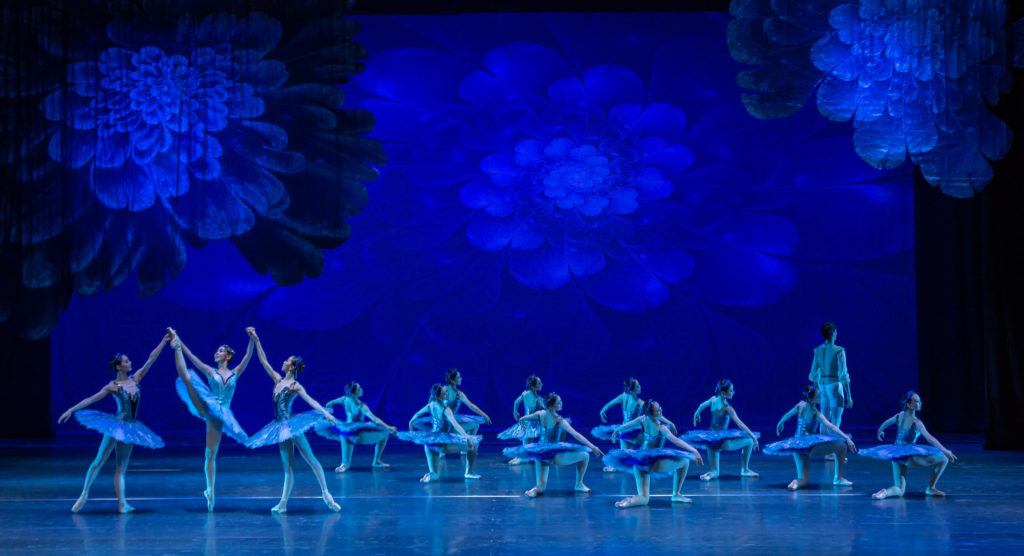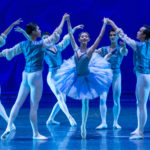Distance Choreography: Peter Quanz works with Harbin Ballet from home in Canada - Vancouver Ballet Society
- Home
- Features 2020 - 2023
- Distance Choreography: Peter Quanz works with Harbin Ballet from home in Canada

By Gary Smith
Choreographer Peter Quanz has two very different artistic bases, where he is involved with two very different companies: one in Winnipeg, Manitoba, where he runs his own group, Q Dance, and one in Harbin, the provincial capital of Heilongjiang province in Northern China, where he works with Harbin Ballet.
“China’s Harbin Ballet is classically based and allows me to explore various aspects of neo-classical composition with a large group of dancers,” Quanz says. “My Winnipeg company Q Dance is all about intimacy. A small company, performing highly detailed work, it is always in close proximity to the audience.”

Quanz was in China when COVID-19 struck, forcing him to leave in January 2020 before the borders closed. This hasty exit meant he left much work unfinished. A decision was made to postpone planned one-act works as well as Quanz’s much anticipated Swan Lake. Instead of these new projects, it was decided that Quanz would work remotely on remounting Kaleidoscope, his 2005 work created for American Ballet Theatre, which will be part of a mixed bill scheduled for this fall.
Set to Saint-Saen’s Concerto No. 15, Kaleidoscope was, in Quanz’s words, “a modest success at its premiere in New York City.” In truth, it was much more than that: a refreshing return to a world of whirling classical tutus, lovely lines and elegant human forms moving joyously in space.
Quanz refined the piece when it was acquired by Montreal’s Les Grands Ballets Canadiens in 2008, which is the version being performed in Harbin. Re-titled Meet Again When the Flowers Bloom, and given new décor by designer Che Cheng Bin, Quanz oversaw the remount from his parents’ dining room in Baden, Ontario, where he has been based since the lockdown. The furniture was removed, the chandelier raised and the room turned into a transmitting centre. One camera mounted on the wall sent Quanz an image from a world away of a Harbin studio where 24 dancers learned the ballet. Chinese ballet master Cao Lemeng was in Harbin to oversee matters and eventually Quanz gave what he called, “a ‘notebook’ full of corrections.”
“Staging remotely is difficult,” Quanz says. “Dance is such a physical and spiritual language, transmitted person to person, hand to hand. Physical contact is necessary, human touch … access to a subtle spiritual place that does not translate well through digital technology.” Technology, he explains, “creates a barrier between me and the dancers, and is something I’ve never had to deal with before. When you aren’t there in the room to support the dancers’ work, it’s tough to finesse the fine points.”

As for new work, plans for Quanz’ Swan Lake are, of course, predicated on his ability to return to China. That means planes have to fly, borders must be open, the virus must be in some control. And relations between China and Canada probably need to be less volatile.
Quanz, 41, would be happy to return. In a ballet world where it’s difficult to create new work, Harbin Ballet is a government-funded oasis for creativity. “Ticket revenue is not a major factor there. Companies do not have to pander to ticket buyers as some North American companies must do.”
Quanz says he has learned Mandarin and knows how to work in a country very different from his Canadian roots. “The language, the food, the temples, the people — there has been so much to discover,” he adds.
Dancers in China, says Quanz, “have embraced the rigours of classical ballet, though sometimes I feel their perfectionism comes at a cost of the spiritual element of dancing.” One of his long-term goals is to bring a deeper personal investment — vulnerability and greater emotions — to their performances. He wants the dancers to “leave their footprints in the choreography,” too, and works in a more personal, collaborative spirit that is not common in China. For Quanz, “A choreographer is a communicator, a negotiator and a mediator; someone who pulls a network of information into focus. Gone are the days when a dancemaker dictated steps and dancers simply replicated them. In China, however, that earlier way of working is still the norm.”
Quanz feels his work has developed deeper shading from experiences in a very different country. “Culturally, China is full of surprises. The ancient history there is juxtaposed with extreme consumerism. There is a rich tension between the old and the new that infuses life. The energy in the country is fantastic, and it’s exciting to be working there, developing a new repertoire of Chinese ballets.”

